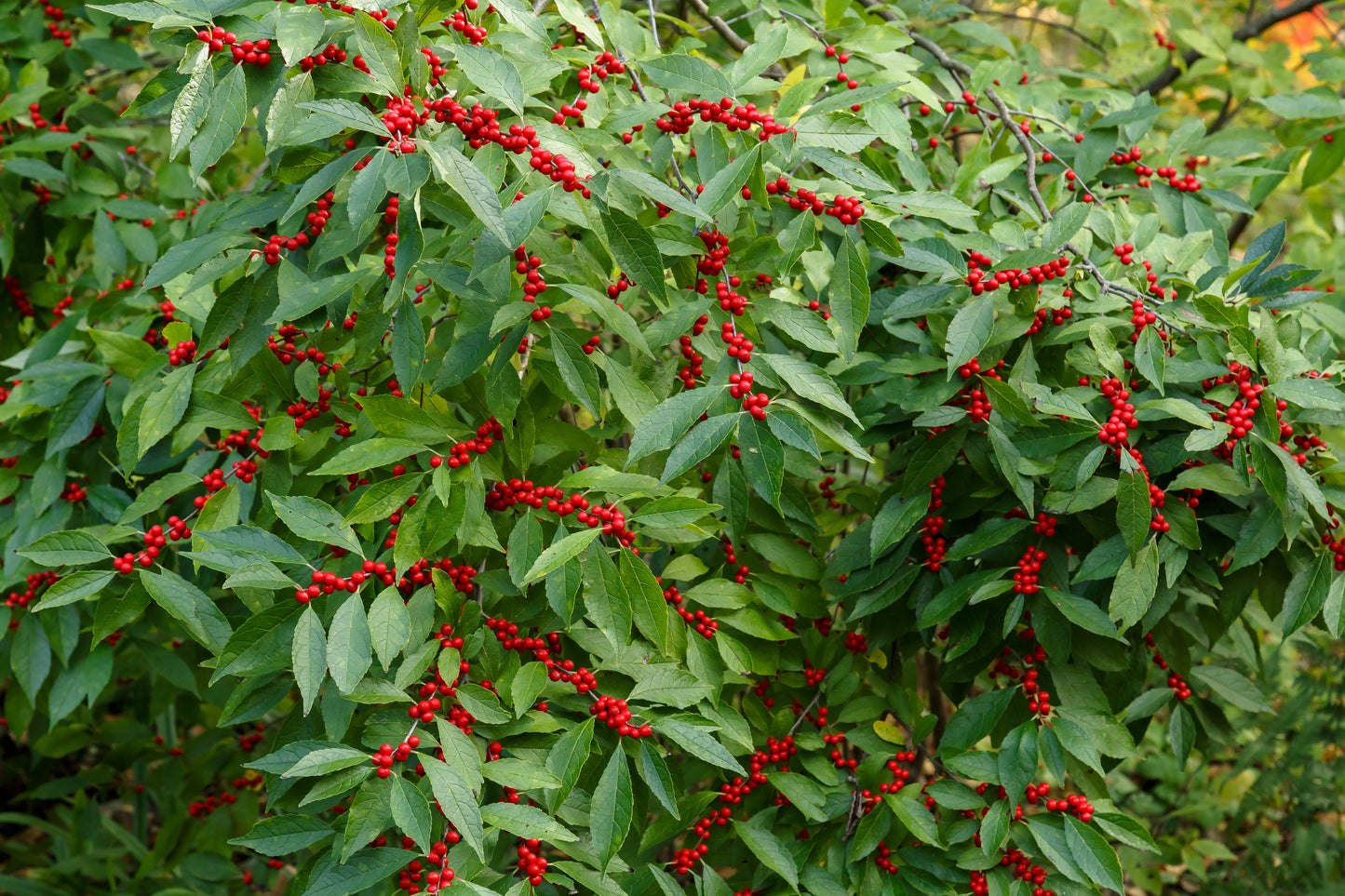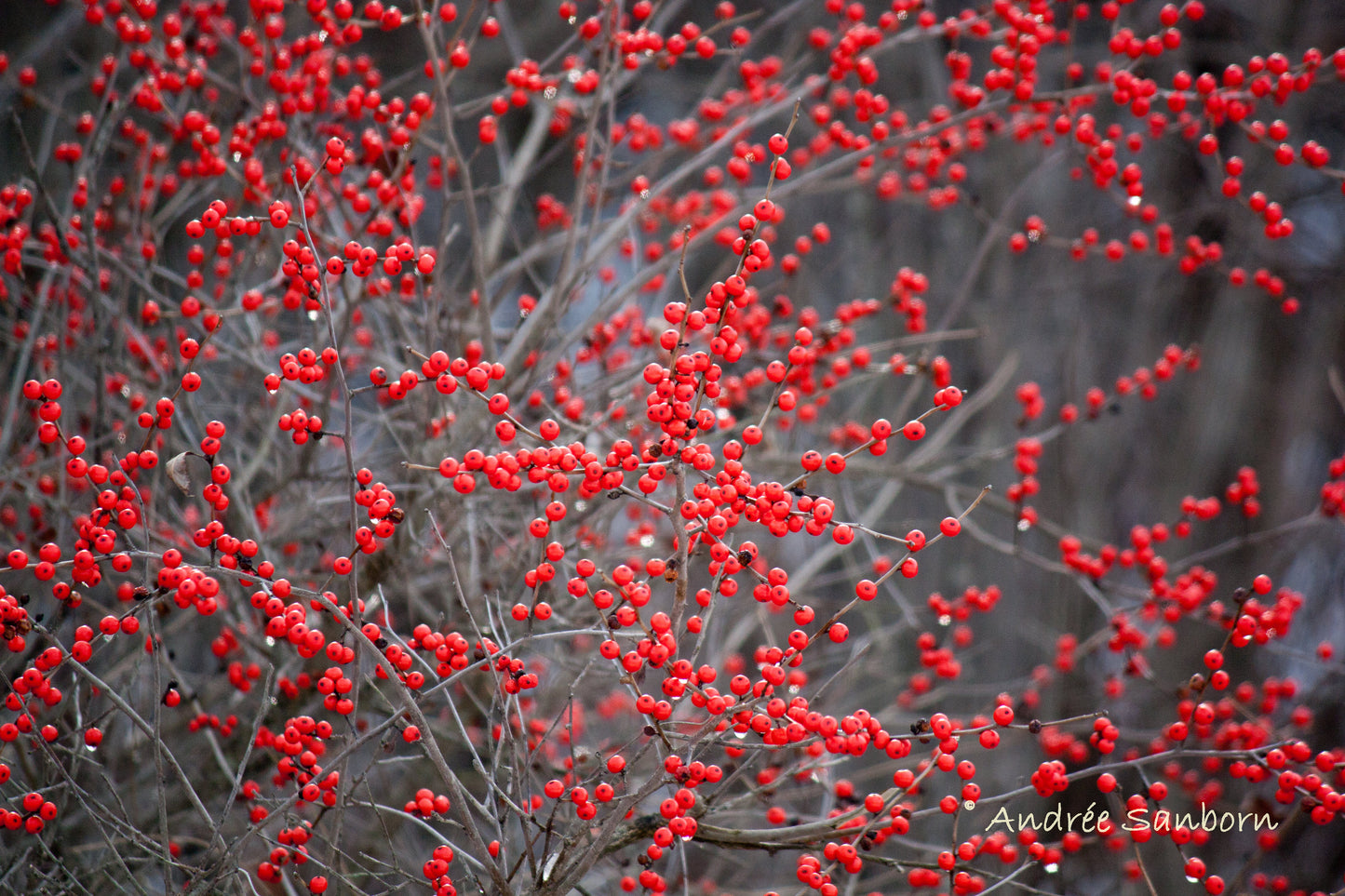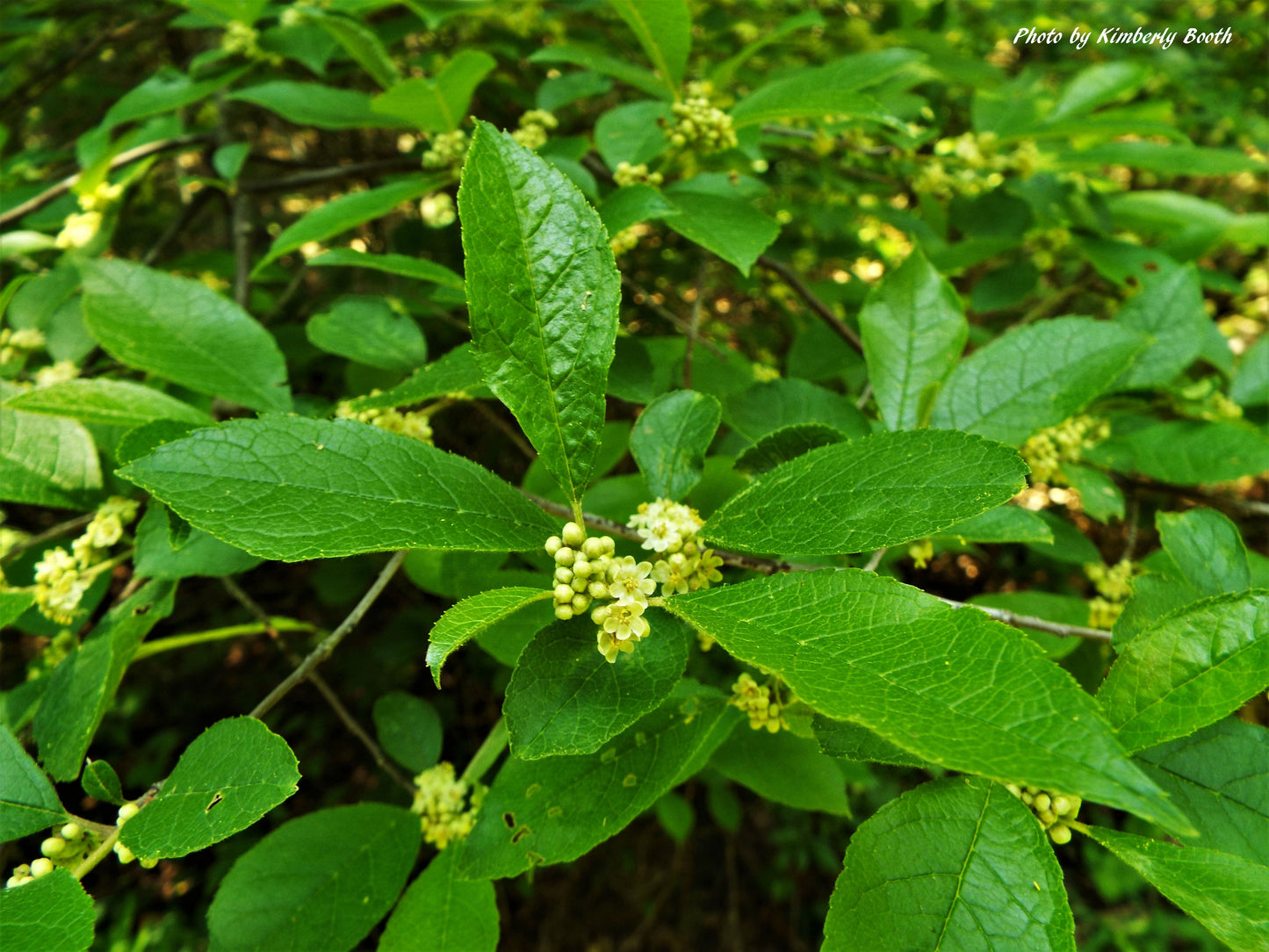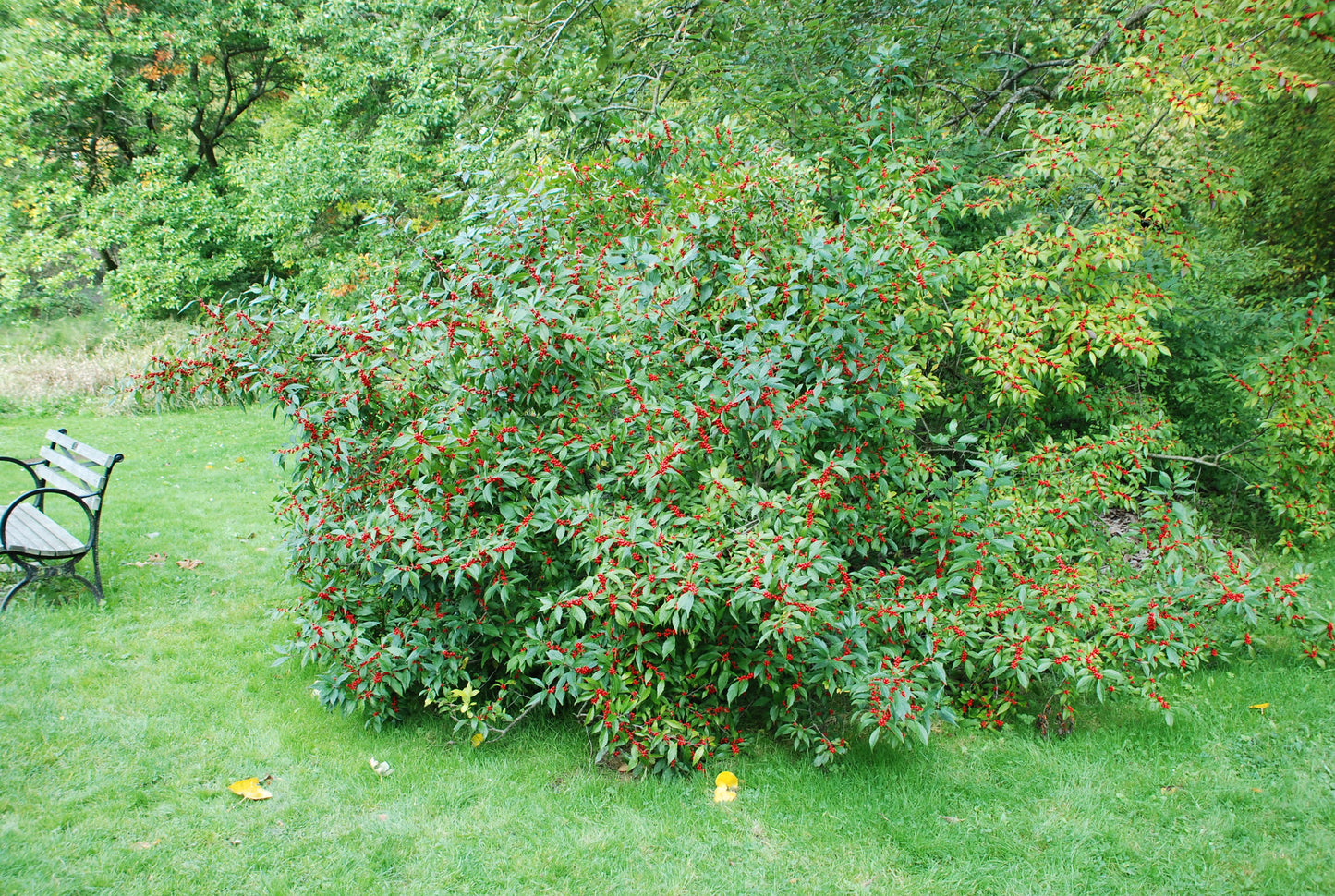Floridaseeds
Winterberry Ilex verticillata 100 Seeds USA Company
Winterberry Ilex verticillata 100 Seeds USA Company
Couldn't load pickup availability
Ilex verticillata, commonly known as winterberry or American holly, is a species of holly native to eastern North America. It is a deciduous shrub that typically grows 6 to 15 feet tall and wide.
Key features of Ilex verticillata include:
Leaves: The leaves are oval to elliptical, about 1-3 inches long, and have toothed margins. They are dark green in the summer and may turn yellow before dropping in the fall.
Flowers: Inconspicuous white flowers bloom in late spring to early summer. They are small and appear in clusters.
Fruit: The most striking feature of winterberry is its bright red berries, which persist on the branches throughout the winter. These berries are a valuable food source for birds during the colder months.
Habitat: Winterberry typically grows in wetlands, swamps, and along the edges of streams and ponds. It prefers moist, acidic soils but can tolerate a range of soil conditions.
Landscape Use: Due to its attractive berries, winterberry is often used in landscaping for its ornamental value, especially in winter gardens where its bright berries provide color when other plants are dormant.
Cultural Significance: In addition to its ornamental uses, Ilex verticillata has cultural significance for some Native American tribes who have used its branches in traditional ceremonies and for making herbal remedies.
Wildlife Value: Apart from being a food source for birds, winterberry also provides cover and nesting sites for various wildlife species.
Propagation: Winterberry can be propagated from seeds or through stem cuttings. However, since it is dioecious (having separate male and female plants), both male and female plants are needed for berry production. Only female plants bear fruit, but they require a nearby male plant for pollination. Hardy in zones 3-9.
Growing Instructions for the Winterberry
The seeds have a period of dormancy. They can be planted outdoors in the fall or winter for spring germination or they can be cold stratified to simulate winter conditions and to break their dormancy at any time of the year. 1. Scarify the seeds by nicking or sanding the seed coat. The seeds can be sanded with sandpaper, a nail file or an emery board. 2. Soak the seed in water for 24 hours. 3. Place the seeds in a plastic bag and seal it. Store the bag in a refrigerator for two months. 4. The seeds like moist, well-drained soil. Prepare a mixture of half potting soil and half sand, perlite or vermiculite. Put the soil in a pot. Water the mixture so that it is moist but not wet. 5. Sow the seeds 3/8 of an inch deep. 6. Water the container and leave it to drain. 7. Put the pot in a shady area. 8. Water the pot regularly so that the soil is moist but not wet. 9. The seedlings can be transplanted when they are a few inches tall.
Materials
Materials
Shipping & Returns
Shipping & Returns
Dimensions
Dimensions
Care Instructions
Care Instructions
Share










